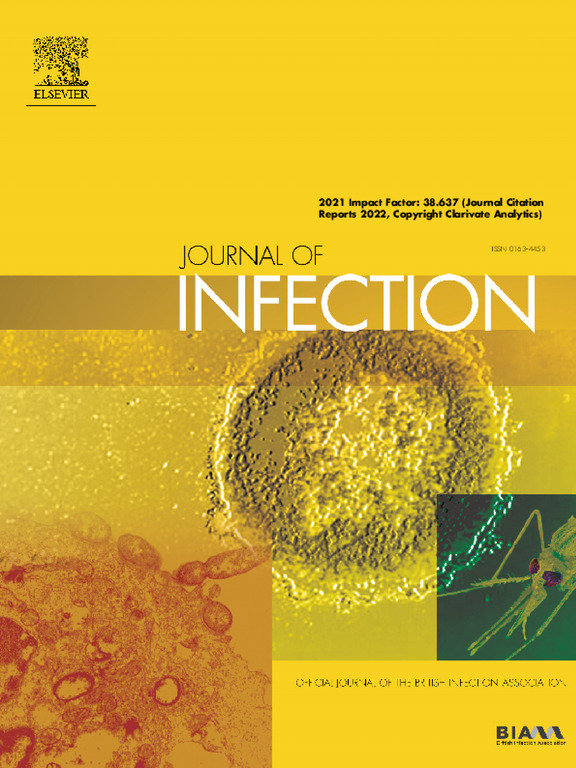Genomic epidemiology and antimicrobial resistance reveal local transmission dynamics of enteric fever in Shenzhen, one of the mega cities in China
IF 14.3
1区 医学
Q1 INFECTIOUS DISEASES
引用次数: 0
Abstract
Objectives
Outbreak of enteric fever and the spread of antimicrobial-resistant Salmonella Typhi and S. Paratyphi pose significant public health challenges in low- and middle-income countries. Understanding the transmission dynamics of these pathogens is essential for developing effective control strategies.
Methods
We conducted phylogenomic analyses and integrated epidemiological data from 135 S. Typhi and 271 S. Paratyphi A isolates collected in Shenzhen from 2001 to 2017. Phylogenetic and temporal analyses were performed to identify prevalent genotypes and assess transmission patterns.
Results
Analyses of S. Typhi isolates in Shenzhen revealed high genetic diversity, with genotypes 3.2.1 (37.8%) and 2.1.7 (20%) being most prevalent. Genotype 3.2.1 formed an independent lineage due to mutations in the quinolone resistance-determining region (QRDR). The multidrug-resistant haplotype 58 (genotype 4.3.1) has been present since 2006. S. Paratyphi A isolates were predominantly genotype 2.3.3 (98.5%). Pathogen exchange occurred with at least four other provinces. A cutoff of ≤3 single nucleotide polymorphisms (SNPs) was effective for outbreak investigation, and 22 genomic clusters were found, suggesting undetected outbreaks or transmission events. While 80% of isolates were susceptible to first-line antibiotics, 16.9% of S. Paratyphi A isolates were multidrug-resistant.
Conclusions
This study provides insights into the transmission dynamics of enteric fever in Shenzhen, underscoring the need for ongoing genomic surveillance to manage and control outbreaks effectively.
基因组流行病学和抗生素耐药性揭示了中国特大城市之一深圳肠道热的本地传播动态。
目的:在低收入和中等收入国家,肠道热的爆发以及耐药伤寒沙门氏菌和副伤寒沙门氏菌的传播构成了重大的公共卫生挑战。了解这些病原体的传播动态对于制定有效的控制策略至关重要。方法:对2001 - 2017年在深圳采集的135株伤寒沙门氏菌和271株甲型副伤寒沙门氏菌进行系统基因组分析和流行病学综合资料分析。进行了系统发育和时间分析,以确定流行基因型并评估传播模式。结果:深圳市伤寒沙门氏菌分离株遗传多样性较高,基因型分别为3.2.1(37.8%)和2.1.7 (20%);基因型3.2.1由于喹诺酮类药物耐药决定区(QRDR)突变而形成独立谱系。多药耐药单倍型58(基因型4.3.1)自2006年以来一直存在。甲型副伤寒沙门氏菌以基因型2.3.3为主(98.5%)。至少与其他四个省发生了病原体交换。≤3个单核苷酸多态性(snp)的截断值对暴发调查有效,发现22个基因组簇,提示未检测到暴发或传播事件。80%的分离株对一线抗生素敏感,16.9%的分离株多重耐药。结论:本研究提供了深圳肠道热传播动力学的见解,强调了持续进行基因组监测以有效管理和控制疫情的必要性。
本文章由计算机程序翻译,如有差异,请以英文原文为准。
求助全文
约1分钟内获得全文
求助全文
来源期刊

Journal of Infection
医学-传染病学
CiteScore
45.90
自引率
3.20%
发文量
475
审稿时长
16 days
期刊介绍:
The Journal of Infection publishes original papers on all aspects of infection - clinical, microbiological and epidemiological. The Journal seeks to bring together knowledge from all specialties involved in infection research and clinical practice, and present the best work in the ever-changing field of infection.
Each issue brings you Editorials that describe current or controversial topics of interest, high quality Reviews to keep you in touch with the latest developments in specific fields of interest, an Epidemiology section reporting studies in the hospital and the general community, and a lively correspondence section.
 求助内容:
求助内容: 应助结果提醒方式:
应助结果提醒方式:


